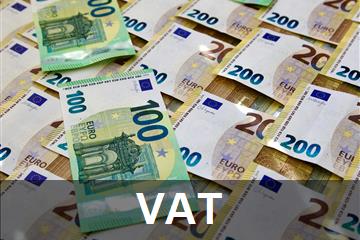
18 set 2024
In the context of community sales, the VAT exemption regime applies if the seller can prove that the goods have been transported to another member state.
This can be achieved by collecting documents as per Article 45-bis of EU Regulation 282/2011, amended by Regulation 1912/2018, or by following guidelines provided by the tax authorities over the years.
Recent jurisprudence has also favored a substantial approach, accepting various documents as valid proof.
This article explores the different documentation requirements and levels of protection for sellers, depending on whether the transport is handled by the seller, buyer, or a third party.
Introduction
In the realm of community sales, the VAT exemption regime is contingent upon the seller's ability to prove that the goods have been transported to another member state. This proof can be established through various documentation methods, as outlined in Article 45-bis of EU Regulation 282/2011, amended by Regulation 1912/2018, or by adhering to guidelines provided by tax authorities over the years.EU Regulation Documentation
To substantiate the transport of goods, sellers can retain documents specified in Article 45-bis of EU Regulation 282/2011. This regulation, effective from January 1, 2020, can also be applied to transactions conducted before this date. The community legislation introduces a rebuttable presumption in favor of the taxpayer, which can only be contested by the tax authorities if they possess evidence that the transport did not occur or if one or more documents are proven to be false. Possessing the documents required by the EU regulation creates a 'strengthened level' of protection for the taxpayer, shifting the burden of proof to the tax office (Resolution 632/2020).However, the EU regulation cannot be applied if the transport or shipment is carried out directly by the seller or buyer without the involvement of other parties, such as a freight forwarder or transporter.
Transport by the Seller
When goods are shipped or transported by the seller or a third party on their behalf (with the involvement of a freight forwarder or transporter), the EU regulation requires the seller to:1. Declare that the goods are shipped or transported by them or by third parties on their behalf.
2. Possess at least two non-contradictory documents from different and independent parties, both from the seller and the buyer. These documents are listed in paragraph 3, letter a), of Article 45-bis of EU Regulation 282/2011. Alternatively, the seller can retain one document from paragraph 3, letter a), and one from letter b). A possible combination could be a CMR signed by the transporter (as confirmed in Circular 12/E/2020) and a transport invoice or bill of lading, or alternatively, an insurance policy related to the shipment.
Transport by the Buyer
In cases where the transport is handled by the buyer or a third party on their behalf, the EU regulation stipulates that the seller must have:1. A written declaration from the buyer certifying that the goods have been transported or shipped by the buyer or a third party on their behalf, including details such as the date and place of arrival of the goods and the identification of the person accepting the goods on behalf of the buyer.
2. At least two non-contradictory pieces of evidence from paragraph 3, letter a), from different and independent parties, or one piece of evidence from paragraph 3, letter a), and one from letter b).
Documentation Practices
If the transport is conducted directly and with the seller's or buyer's own means (rendering EU Regulation 282/2011 inapplicable) or if the taxpayer prefers to follow the guidelines issued by the tax authorities over the years, they can continue to retain the document set recognized by practice, obtaining a 'basic level' of protection.The tax authorities will evaluate the adequacy of the collected documents on a case-by-case basis, and the presumption of the EU regulation will not apply.
In such cases, in addition to ordinary documents (contract, sales invoice, Intrastat lists, DDT if handling the transport, banking documentation), the taxpayer must retain a CMR signed (in this case also by the buyer for receipt) or alternatively a declaration from the buyer that the goods have arrived in the destination country (Resolutions 71/E/2014, 100/E/2019, 117/E/2020, and 272/E/2023).
Judicial Approach
It is noteworthy that the Court of Cassation, in judgment 8477 of March 28, 2024 (in line with Cassation Order 30889/2023), reiterated that in cases where the national seller has not directly handled the transport of the goods and cannot present the transport document, they can provide proof with any other suitable document.Among these, the declaration of delivery by the buyer, which according to some merit judgments, can also be received after the transaction (Cgt second degree Lazio, judgment 2338 of April 9, 2024; Cgt second degree Turin, judgment 629 of May 8, 2024).
Critical Aspects and Potential Issues
- The complexity of documentation requirements.
- The risk of non-compliance with EU regulations.
- The potential for disputes with tax authorities over the adequacy of proof.
Common Pitfalls and Errors
- Failing to collect the necessary documents.
- Misunderstanding the requirements of EU Regulation 282/2011.
- Relying solely on the buyer's declaration without additional evidence.
Useful Tips and Recommendations
- Always retain multiple forms of documentation from independent sources.
- Stay updated with the latest guidelines from tax authorities.
- Ensure clear communication with buyers and transporters to obtain all necessary documents.

